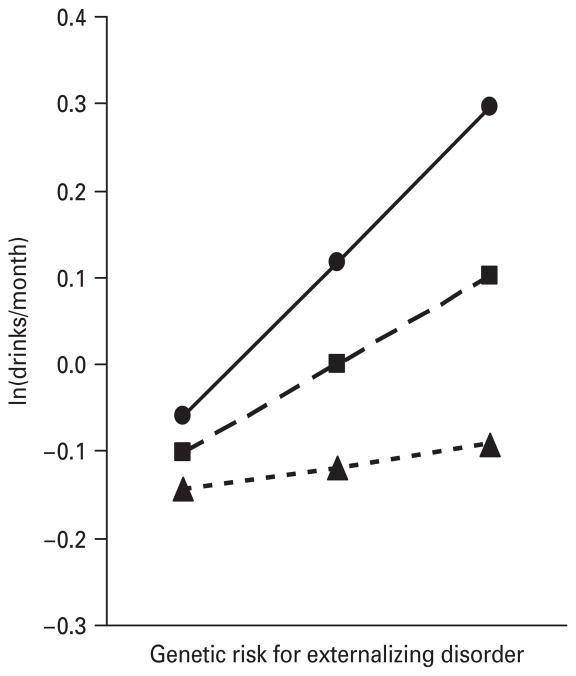Fig. 2.
The prediction of the maximal yearly alcohol consumption from ages 12–14, as measured by standardized monthly intake, by the genetic risk for externalizing disorders (Ext Dis), alcohol availability (Alc Avl) and their interaction. The results, from the best-fit regression model with parameter estimates as outlined in Table 1, are depicted for three hypothetical individuals with a moderately high level of alcohol availability [–●–, values 1 standard deviation (S.D.) above the mean], an average level of alcohol availability (– –■– –, mean value) and a moderately low level of alcohol availability (- -▲- -, values 1 S.D. below the mean). Maximal yearly alcohol consumption is expressed by the average monthly alcohol consumption in that year, standardized so that, at the mean level of genetic risk and the mean level of alcohol availability, the score is approximately zero. The y-axis then depicts this mean score in standard deviation units.

